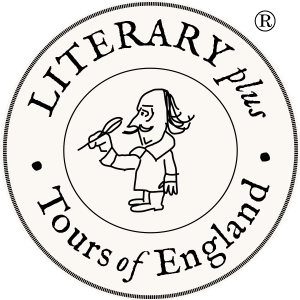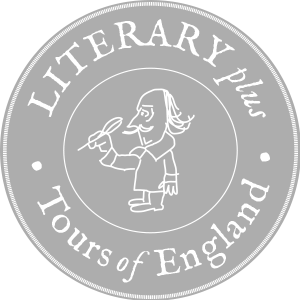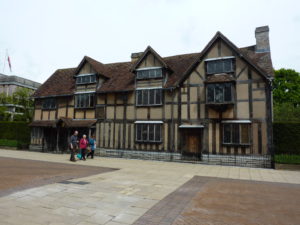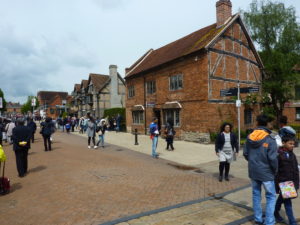21 Dec Shakespeare’s Stratford and London
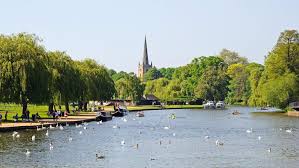

“All the world’s a stage, and all the men and women merely players .” – William Shakespeare (As You Like It)
Shakespeare Basics
William Shakespeare is an almost mythical figure, about whom we know remarkably little. What we do know, however, is what defines him as the greatest English writer of all time: 38 plays, many of them masterpieces, plus 154 sonnets and two narrative poems. For more on the man himself and his extraordinary life, I refer the reader to Bill Bryson’s entertaining biography Shakespeare: The World as Stage (HarperCollins, 2007) and Michael Wood’s brilliant In Search of Shakespeare (BBC Books, new edition, 2005) (also available on DVD).
Visiting Shakespeare’s Birthplace
Our literary tour of England took Judy and me to Stratford-upon-Avon. A medieval market town, Stratford is remarkable enough to merit a visit in its own right. However, its inherent appeal is overshadowed by its place in history as Shakespeare’s birthplace and where he lived for the first twenty or so years of his life. It’s believed that he was born in 1564 in his parents’ half-timbered house on Henley Street (now known as Shakespeare’s Birthplace). He also spent the first five years of his marriage there with his wife Anne Hathaway. The house has been preserved intact and, as you might imagine, it draws large crowds of visitors. Even so it must be seen, not only for the little room that’s supposed to be where the boy William was born, but also for its extravagant gift shop and world-class bookshop.
Shakespeare sites around Stratford
In the village of Shottery, one mile west of Stratford, we viewed Anne Hathaway’s Cottage, arguably the most famous thatched cottage in the world. Built in 1463 of cruck construction – and much extended later – only the kitchen and parlor remain from the original farmhouse. Little is known about Anne except that she was of yeoman lineage. Shakespeare married her when he was 18; she was seven years older and three months pregnant.
Shakespeare’s mother, Mary Arden, was the daughter of Robert Arden, a yeoman farmer of Wilmcote (a small village just outside Stratford). Mary Arden’s Farm is to this day a working Tudor farm, giving visitors an insight into what life was like when Mary lived there with her seven sisters. Back in Stratford we looked into Hall’s Croft, the beautifully furnished home of Shakespeare’s daughter Susanna and her husband. The main part of this fine timbered property was built in 1613.
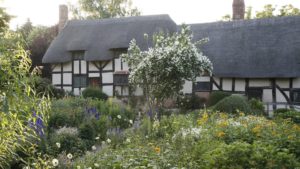
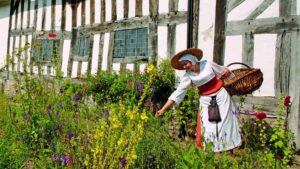
More Shakespeare sites in Stratford
For most of his adult life Shakespeare divided his time between Stratford and London. In 1597 – while he was still busy in London – he purchased New Place as his (and his family’s) Stratford home. Although the house was demolished in 1759, a lovely garden commemorates the importance of the site. Around 1613, with his fame and fortune secure, Shakespeare returned to Stratford permanently and it’s believed that he wrote his later plays in New Place. He died in the house in 1616 at the age of 52.
Shakespeare’s grave is in Holy Trinity Church. From the magnificent Shakespeare statue in Bancroft Gardens, near the town center, we took the delightful walk to the church along the west bank of the Avon. Along the way, apart from stopping to feed the swans, we passed the splendid Royal Shakespeare Theatre, permanent home of the Royal Shakespeare Company. That evening we were lucky enough to see the RSC’s production of Julius Caesar, performed with their usual panache and professionalism.

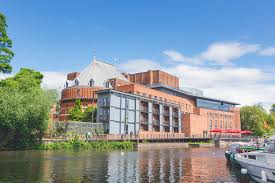
Shakespeare sites in London
Following the so-called lost years of Shakespeare’s life (1585-92), when his whereabouts and what he was doing are pretty much a total mystery, he ended up in London. This was the time when Shakespeare began to change his focus from writing poetry to writing plays. He was also establishing himself as a professional actor. So it was to London that Judy and I went next on our literary tour.
The primary site is the Globe theatre, in Southwark on the south bank of the River Thames. Opened in 1997 and located only 200 yards from the original (which was destroyed by fire in 1613), the Globe’s design is based on contemporary drawings of theatres from the Golden Age of Elizabeth I. An excellent tour and the fascinating exhibition about the theatre’s construction were enjoyable but, sadly, we did not have a chance to see a performance.
Shakespeare probably lived in Southwark for much of his time in London. So we visited the splendid Southwark Cathedral to view the impressive Shakespeare memorial and stained-glass window. Then we headed to Leicester Square, in London’s theatre district, where it’s impossible to miss the huge marble statue of Shakespeare on a high pedestal in the center of the square. There’s a similarly impressive statue in Poets’ Corner in Westminster Abbey.
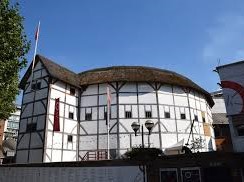

Postscript: Watching Shakespeare
As a Shakespeare fan, I cannot resist offering my recommendations for film and TV adaptations of some of his greatest plays. Whether or not the reader is familiar with the plays, these adaptations are well worth viewing:
The Hollow Crown (2012, 2016) – the BBC’s brilliant adaptation of the Histories, filmed entirely on location, with Benedict Cumberbatch as a truly menacing Richard III.
Great Comedies (Twelfth Night, A Midsummer Night’s Dream, The Taming of the Shrew) (2015) – wonderful live performances on stage at the Globe.
Much Ado About Nothing (1993) with Kenneth Branagh and Emma Thompson.
Romeo and Juliet (1968) directed by Franco Zeffirelli.
Julius Caesar (1953) starring Marlon Brando and James Mason.
Hamlet (1948) with Laurence Olivier in his classic Oscar-winning role.
I also recommend Simon Callow’s one-man show Being Shakespeare (2012) and Shakespeare Live from the RSC (2016), marking the 400th anniversary of Shakespeare’s death. Also not to be missed is the absolutely marvelous movie Shakespeare in Love (1998), winner of seven Oscars including Best Picture. Finally, there’s Disney’s The Lion King (1994), for which Shakespeare gets no writing credit even though the story is clearly inspired by Hamlet.
If you’re thinking of visiting Stratford-upon-Avon, allow at least one day (preferably two or three) to explore the town (including Shakespeare’s Birthplace). Be sure to outfit yourself with comfortable shoes, a light jacket and a curious mind. Looking for more to do in the area? Consider Warwick Castle and Kenilworth Castle. To visit Stratford, Oxford, Kenilworth and other fascinating sites associated with your favorite writers, plan your itinerary here.
